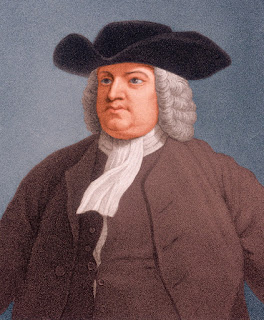Isaac Newton was born in 1642 at Woolsthorpe, near Grantham, Lincolnshire, England, three months after his father, yeoman farmer Isaac, died. Newton’s mother, Hannah Ayscough, married the Reverend Barnabas Smith and left Newton with his grandparents at age three.
He grew up to hate his stepfather and never psychologically recovered from his mother’s abandonment. By the time Smith died in 1653, Newton’s personality had been forged; he became distrustful, hesitant in dealing with others, and emotionally unstable; these would be lifelong traits.
Newton attended day school in the nearby village and the Kings’s Grammar School at Grantham. He worked on his mother’s farm at age 14 but returned to school in 1660 to prepare for entrance to Trinity College at
Cambridge University
in 1661.
His mother refused to pay his tuition so Newton served as a subsizar, who performed a variety of jobs for fellow students. Newton did not distinguish himself at Cambridge, but he privately studied and mastered the esteemed works of
René Descartes
and Euclid.
Newton attended day school in the nearby village and the Kings’s Grammar School at Grantham. He worked on his mother’s farm at age 14 but returned to school in 1660 to prepare for entrance to Trinity College at Cambridge University in 1661. His mother refused to pay his tuition so Newton served as a subsizar, who performed a variety of jobs for fellow students.
Newton did not distinguish himself at Cambridge, but he privately studied and mastered the esteemed works of René Descartes and Euclid. Dr. Isaac Barrow, Lucasian Professor of Mathematics at Cambridge, became his mentor and brought out Newton’s genius.
Avoiding the Plague Newton returned to his mother’s farm to avoid the plague rampant in Cambridge from 1665 to 1666. Without access to his books, Newton discovered differential calculus, which he called “direct and inverse method of fluxions,” and expansions into infinite series.
He used common arithmetical elements to make them universals. Newton also queried the nature of gravity but realized his experiments required more work and left the persoalan until 1685.
Upon his return to Cambridge in 1667, Newton was shown the work of Nikolaus Mercator (1620–87), who had recently published Logarithmotechnia. This contained some of the methods Newton had used while experimenting on the farm. Newton showed Barrow his own ideas, and this work was published as De analysi per aequationes numero terminorum inifitas in 1711.
After painstaking experiments in 1668, Newton discovered the spectrum, which he deduced was white light made up of colored lights when exposed to a transparent medium. This idea led Newton to perfect a reflecting telescope in 1668; it was six inches long and could magnify 30 times. Prior to Newton’s telescope, only refracting telescopes were used.
Barrow resigned from Cambridge, and Newton obtained the Lucasian Chair in 1669 at age 27 after he earned a master’s degree. He presented lectures on optics that were not published until 1728. By this time, Newton’s work was noticed by such scientific luminaries as
Robert Hooke
, Christiaan Huygens, James Gregory, and Sir Christoper Wren among others.
Newton became a fellow of the Royal Society in 1671. Controversy erupted over claims by Hooke, who was a powerhouse at the Royal Society, that he was first to invent the “pocket tube” (telescope) in 1664. Gregory the Scot claimed he had discovered calculus. Newton removed himself from the controversy and only published his work
Opticks
in 1704 after Hooke died.
Newton suffered a mental breakdown in 1675; it took him four years to recover. He then found mathematical proof of planetary ellipses around the Sun. Hooke had also realized these laws but failed to prove them.
Edmund Halley
(1656–1742), the astronomer and mathematician, met with Newton in 1684.
Halley urged him to publish his findings and financed the book entitled Philosphiae naturalis principia mathematica, better known as Principia, which included his three laws of motion. The third book of Principia appeared in 1687 and turned the natural sciences upside down.
Newton’s theories were taught at Edinburgh by his disciple David Gregory and Cartesian theory was dropped at Cambridge and Oxford; the French would not accede to Newton’s theories until 50 years later. Newton grew tired of life at Cambridge, so he embarked on a career of public service in 1687.
He became a member of Parliament for Cambridge University in 1689. He had another nervous breakdown in 1696. Upon recovering, Newton accepted the job of warden of the Mint in London. He was promoted to master in 1699 and revised Britain’s coinage.
Newton was reelected to Parliament in 1701 but soon lost interest in the position. He became president of the Royal Society in 1703, a position to which he was reelected for 25 years. He was a tyrannical and autocratic president who had favorites and made life torturous for those who dared to disagree with him. Queen Anne knighted him in 1705.
Controversies Newton was engaged in two major scientific controversies. The first was from 1705 to 1712 with Astronomer
Royal John Flamsteed
(1646–1719), whose notes Newton conspired to publish against Flamsteed’s wishes. The second was from 1704 to 1724 with
Gottfried Wilhelm von Leibniz
(1646–1726), a German mathematician.
Leibniz claimed he had discovered calculus before Newton. It has been proved that Newton discoverd calculus first but did not publish it, while Leibniz did. Leibniz and Johann Bernoulli (1667–1748), who mastered calculus, sent Newton problems they believed no one could solve in months, yet he solved them within hours.
As Newton aged, he spent time rewriting his notes. He had written over 1 million words on fourth- and fifth-century c.e. church history and on the Bible that were never published. His focus was to date biblical events using his mathematical calculations. Newton died in London on March 31, 1727, after suffering through numerous infirmities and various illnesses. He received a magnificent funeral and is buried in Westminster Abbey, London.








